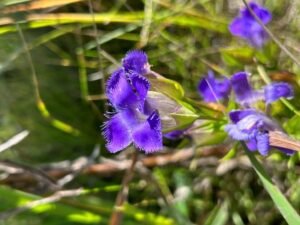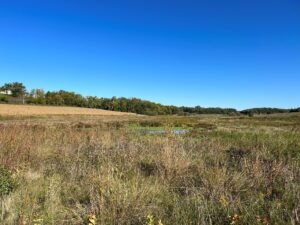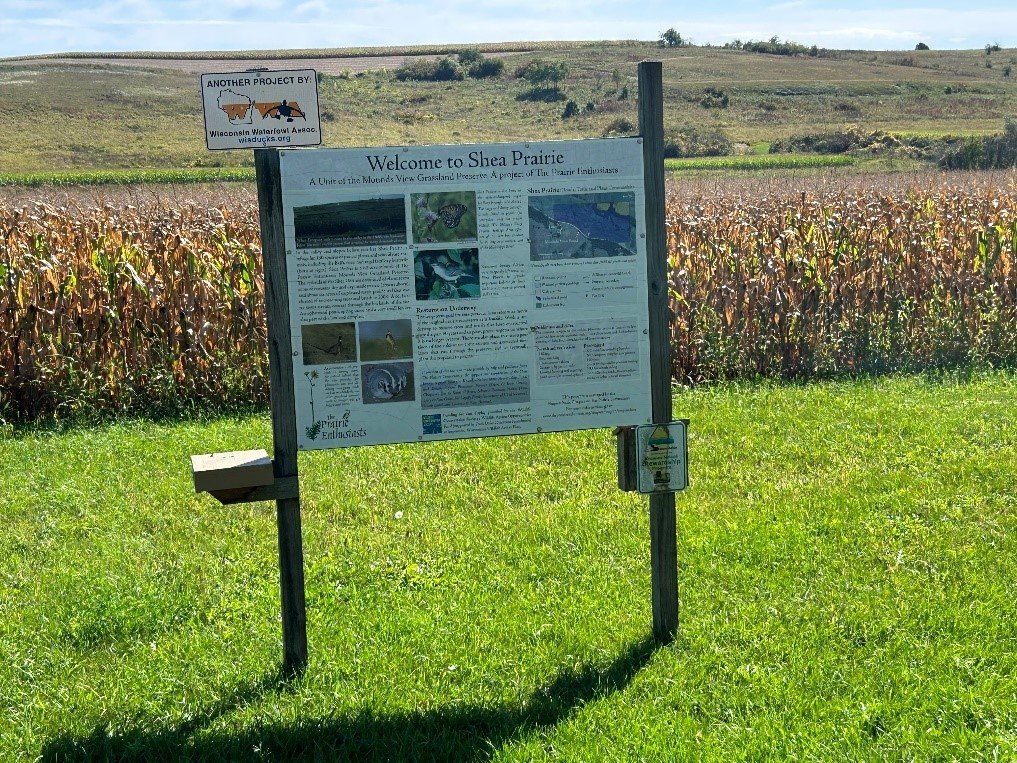 By Anna Rzchowski, Public Lands Ecologist – arzchowski@wisducks.org
By Anna Rzchowski, Public Lands Ecologist – arzchowski@wisducks.org
This article originally appeared in Wisconsin Waterfowl Association’s November, 2023 Newsletter edition.
Nestled within the Military Ridge Prairie Heritage Area – a 50,000 acre region identified as one of the best opportunities in Wisconsin for grassland habitat conservation – The Prairie Enthusiasts’ (TPE) Shea Prairie has undergone an exciting transformation, and WWA has been actively involved along the way.
In early October, I met with DNR and TPE representatives to explore past projects on-site. The site is an encouraging example of how organizations like ours can use our many talents and resources to make an even bigger impact on the landscape.
In 2012, WWA’s own Peter Ziegler was actively involved in planning and coordinating an extensive wetland restoration project along Williams Creek. Over the years, several feet – in some places as much as four to five feet – of upland soils had been deposited over the original wetland soils lining the valley bottom, bringing excess nutrients and preventing healthy wetlands from returning in these areas. Through this project, several stream meanders were restored and upland soils were completely removed from the wetland acres. Eleven years later, following the intensive earth-moving and on-going TPE management efforts, a healthy wetland ecosystem is alive and well. This time of year, geese fly overhead, gentians bloom, and grassland birds forage for seeds among the senescing plants.
The project area was just 10-12 acres in size (a part of the larger Mounds View grassland complex owned and managed by TPE), but the area provides much habitat. Over 120 plant species call this wetland home, brown and brook trout inhabit the cold water stream, teal make use of the natural ponds, and otter, muskrats and sometimes beaver use the healthy stream ecosystem. And to add to the success, when the DNR surveyed the stream in recent years, they decided to reclassify it from a Class 2 to a Class 1 trout stream.
 The success of this previous effort paves the way for continuing the restoration. WWA is pleased to be partnering with TPE in the next phase of restoring flood plain reconnection to WIlliams Creek. Significantly, WWA’s effort in this upcoming phase of the restoration is being underwritten by Vortex optics. So far, as shown on the below diagram, soil borings have been taken to reveal original floodplain levels, and reflected in preliminary designs.
The success of this previous effort paves the way for continuing the restoration. WWA is pleased to be partnering with TPE in the next phase of restoring flood plain reconnection to WIlliams Creek. Significantly, WWA’s effort in this upcoming phase of the restoration is being underwritten by Vortex optics. So far, as shown on the below diagram, soil borings have been taken to reveal original floodplain levels, and reflected in preliminary designs.




